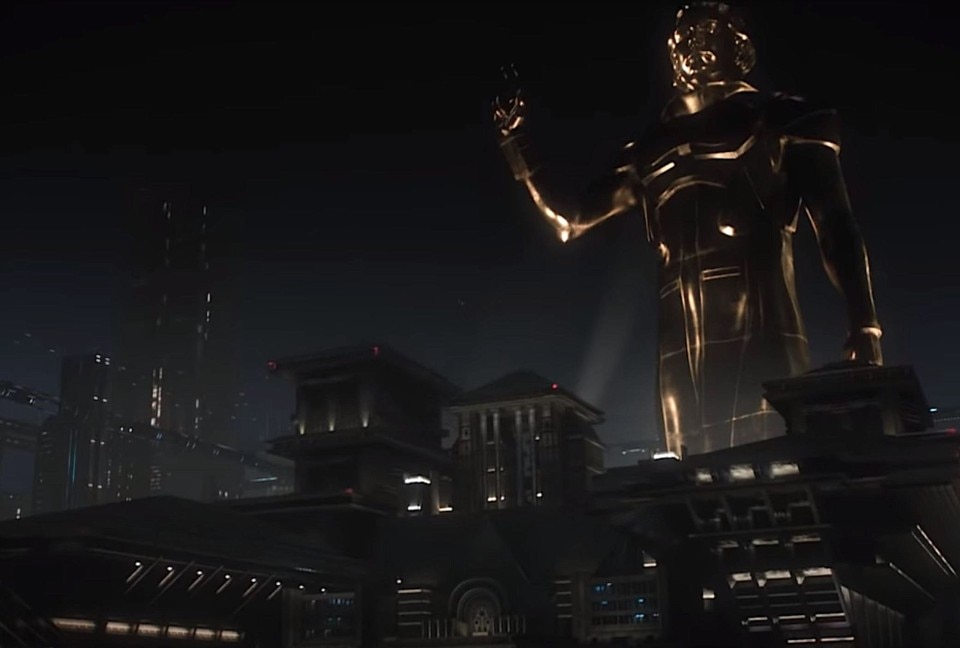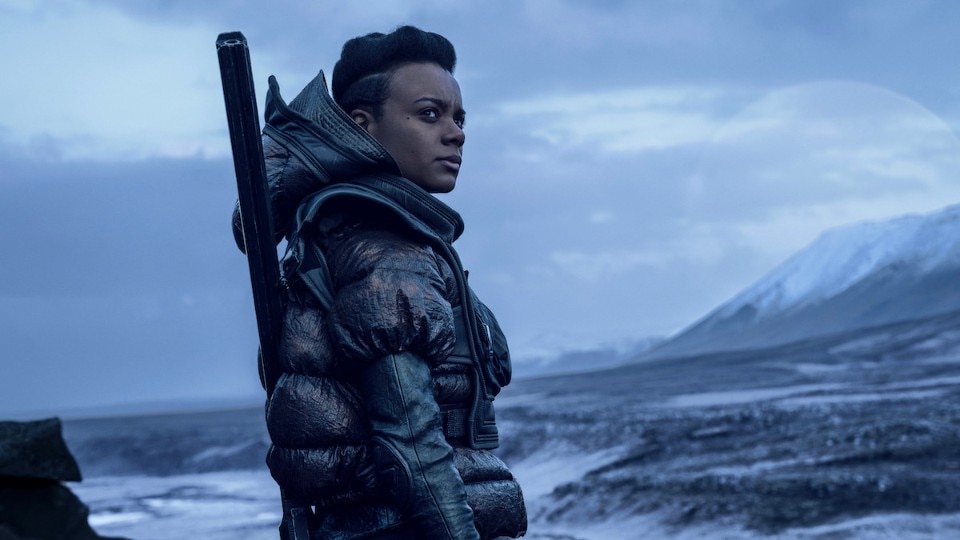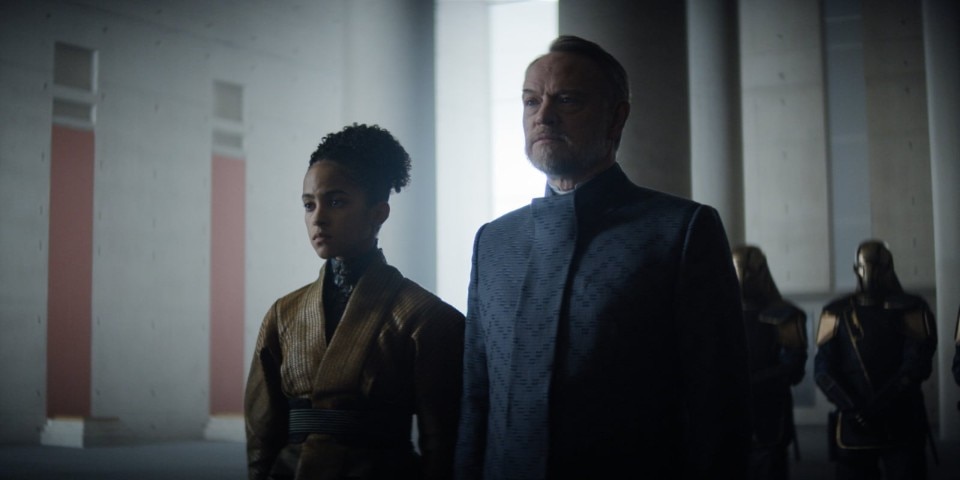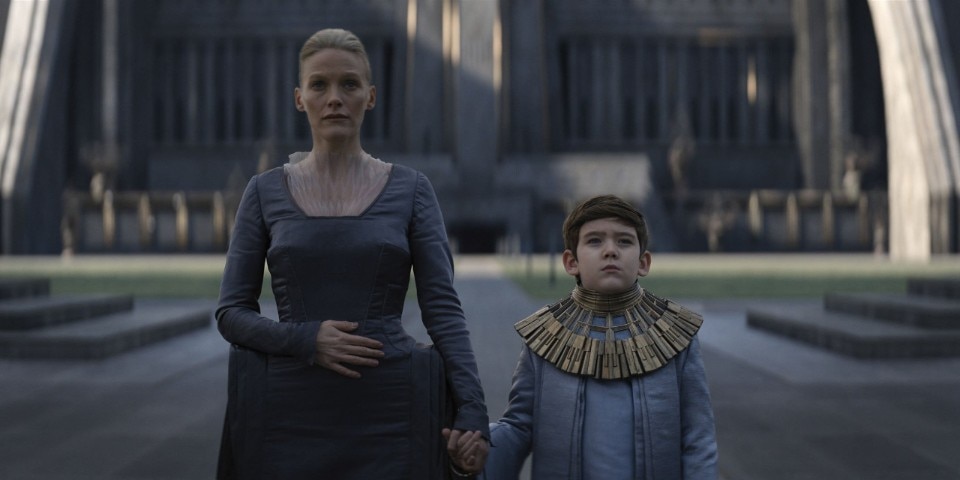When we say that TV series are so good that they look like films, we could not be more mistaken. Not only because they are very rarely similar to films (for one thing: they do not use images to make them speak for themselves but to describe a screenplay), but also because they are very close to literature, they are the novels and the great narratives that the cinema does not know, not even with sequels and prequels. Therefore, the combination between Isaac Asimov, always unlucky in film adaptations, and a TV series, immediately seemed a good idea. However, the result showed that there were many reasons behind those adaptation difficulties.
If science fiction is the art of talking about the future to say something about the present, Foundation (the TV series) struggles to do both. Asimov’s vision of the future is pictured in a way that is anything but original, indeed it rehashes some of the ideas and scenarios we are most familiar with in our own time. Like Terminus, a planet where a good part of the first season takes place, which is the classic barren scenery we have seen more and more of since Prometheus. Iceland usually lends the volcanic and unadorned landscapes and in this case Tenerife does, but it does not matter. Already this year, Raised by Wolves had told a very similar story, one of “foundation”, in a similar setting, finding a greater imaginative potential in the remixed Christian iconography to say something else.

And this despite the fact that Foundation is a TV series whose ambition is no different from what the plot tells. The ancient story of the struggle to re-found a culture while preserving its notions and fundamental elements throughout all the possible crises of a civilisation becomes the struggle to adapt it in 8 seasons. No TV series, not even the most successful, ever knows if another season will be produced until the ratings of the current one come in. Planning 8 of them is an unrestrained dream that can be shattered every year. However, that is the plan of Goyer, who has created it with Josh Friedman and in his head adapted the whole cycle into 80 episodes. The first season, with its eight episodes, is going online on Apple TV+ with the aim of attracting so many subscribers that it will earn the right to go ahead year by year. Yet, even now in its first season, it seems like it is going to be hard, despite the obvious impressiveness of the production.

Notoriously, the phrase that won Apple over and led them to start the production was: “It is a 1,000-year chess game between Hari Seldon and the Empire, and all the characters in between are pawns. Some of them become kings and queens throughout the saga”. However, the dilation of narrative possibilities seems to fail to create a corresponding dilation of narrative potential as well. Productive wealth does not also equal creative wealth. Ultimately, the love for Asimov's novels does not correspond to the ability to portray their incomparable appeal.
This is not because of the changes that have been made (the change of sex of some characters for example) because some of these are the parts that really work in the audio-visual version. For instance, the “genetic” dynasty that imposes the same actor in the same role decades apart, creating more continuity in the enjoyment and talking quite well about the inconsistency of the body in science fiction, where conscience prevails (something reflected in the return of Seldon’s conscience).

For the rest, instead of focusing on characters, plot and mystery (the driving force behind most modern seriality), Foundation focuses on scale, on the size of the elements and spaces, from the large rooms of the royal palaces (between Art Deco and, when necessary, Brutalism), to the statues of the regime and the vastness of the spaces. It is an empire of billions of subjects that reflects this in the impressiveness of the sets. All right, but terribly ordinary. It is impossible to imagine an autonomous and non-derivative future vision, and the vision of the future, in science fiction, is everything, it is the character and it is the originality, even more than the story, even more than the characters. The ability to visually create a world is what makes the most sense in science fiction. It is always the design that speaks.
On the other hand, Foundation is a TV series of places and vastness, made up of deserts and threatening constructions in the distance, as spaceship interiors and visits to unseen planets. There are many different sets and scenarios, many actors, many locations, yet if a similarity can be found with the model of seriality to which it aspires (Game of Thrones) it is more with the opulence of the last seasons than with the dryness of the first. A TV series that is already off to a great start with the means but not the legs. It cannot hold up all this opulence with level-headed writing and a sufficiently autonomous look. On the contrary, it has a clarity of light, a naturalism that clashes a lot with the intentions and the variety of planets, social backgrounds, costumes etc.
For a series about the preservation of a civilisation that makes world-building its strength, it is glaringly disappointing that it is precisely that aspect that disappoints: that of all the wide-angle shots of the large spaces, the magnificence of the settings and the use of costumes it never manages to make a unique and personal vision. It never succeeds in being an exciting take on our present and its trends taken to extremes, but remains merely a television production.
Image courtesy of Apple TV+


